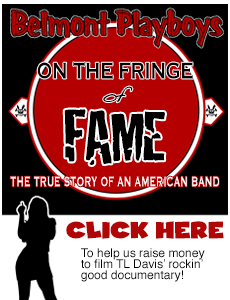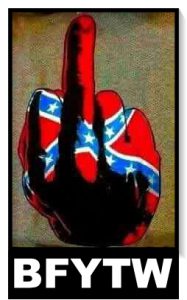That would be OG blogger Ken Lane, who posted up a link to one of the better Nashville songwriters of this or any other era, the peerless Chris Stapleton.
A damned fine singer too, is our Mr Stapleton. Funny thing about him, he’s a dedicated player of a tragically overlooked guitar, the Fender Jazzmaster. As it happens, my first gee-tar was a 64 Jazzmaster, an extremely high-value axe nowadays (backstory here). Stapleton, of course, was also a founding member of contemporary-bluegrass titans The Steeldrivers, leading us into a bonus CT rip.
Man, if those flawless vocal harmonies don’t raise the chilblains on the back of your neck, I just don’t know how I can possibly be of any help to ya. More on CT’s, shall we say, eccentric gear preferences:
Chris Stapleton’s primary electric guitar for his solo career has been the Fender Jazzmaster. Unlike many country players, who are sworn to the twang and aggression of the Fender Telecaster, Chris has a real soft spot for this Fender timeless classic, telling Rolling Stone that he bought his first one in the mid-2000s. It was a 1962 Jazzmaster reissue in, of all colors, ocean turquoise, far from the elegant sunbursts and denim of most country guitarists. On the color, Stapleton said “It wasn’t a color I looked at and was going, “Oh man, I need that surf guitar!” But I played it and, like with a car, you can meld with things: This is my guitar. That’s how that happened. There is great comfort in knowing what your rig is and then you don’t have to fool with it anymore.”
Fender launched the Jazzmaster in 1958, intending it to be an upmarket version of the Stratocaster, not unlike Gibson’s delineation of their Custom and Standard ranges around the same time. The Jazzmaster, as its name suggests, was marketed at jazz guitarists of the era. However, it was quickly adopted by surf rock guitar players in the early 1960s who highly valued its reduced sustain and unique resonance when compared to other Fender models.
The Jazzmaster sets itself apart from other Fender guitars in several ways. One is its distinctively large body, far bigger and heavier than those of the Stratocaster, Telecaster, or even the similar silhouette of the Jaguar. The Jazzmaster also boasts large, white “soapbar” pickups that bear a striking resemblance to the Gibson P90. This similarity is purely cosmetic, however, with magnetic pole pieces on the Fender soapbar pickup as opposed to the P90’s magnets beneath the coil. The Jazzmaster coil is wound flat and wide, more so than that of the P90, and far more than any other Fender pickup.
Stapleton also developed a close working relationship with Fender, culminating in the Chris Stapleton Signature Model Princeton (!!) amp.
He actually bought his first 1962 Princeton in Ohio during a writing session with Peter Frampton. Of the original Princeton, he said “I use that amp still. That amp was a studio amp of mine for many years before I got hold of another one because I thought I should probably buy another one”.
The 1962 Princeton was initially marketed as a student amplifier, as its diminutive size and lower output would indicate. However, plenty of gigging musicians worked out that the Princeton’s smaller frame meant it could attain saturation and overdrive at lower volumes than many of its competitors. Rock, blues, and country players were particularly enamored of its rich, saturated drive tone as well as the sparkling cleans for which Fender amps are famous.
Chris Stapleton’s signature Princeton was built to the man’s own specifications. The story of this amp’s birth seems deceptively simple. Stapleton told Billboard that “this was borne out of me calling Fender up [and asking them] to build this amp for me…I wanted a new amp that looked like the old amp and worked like the old amp, and that didn’t exist. So we called Fender, and very quickly the conversation escalated to doing something like this”.
The hand-wired Chris Stapleton signature amp is a twelve-watt combo with attractively simple controls, featuring Fender Vintage Blue tone caps, Schumacher transformers, and an output tube-biased tremolo circuit. Its cabinet is made from solid pine, covered with textured brown vinyl. Like the bourbon-barrel Blues Junior, its handle is brown leather, and its dark brown faceplate matches the darker brown control knobs. Two 12AX7 preamp tubes, two 6V6 power tubes, and a single 5Y3 rectifier tube power its Eminence 12” Special Design CS speaker. It also has a built-in tremolo effect.
Never have played a brown Princeton—in fact, I don’t know that I’ve ever even seen one before. I DO know the later (mid-late 60s, pre CBS) blackface Princetons are sweet-sounding little amps, although a bit on the, umm, quiet side to suit my taste.



















 - Entries
- Entries
back when Chris first sang “Whiskey and You”; leastways when I first heard it, sitting on my ‘assigned seat’ at PT’s Bar in Hendertucky, NV.; my thought was that I was listening to someone rebelling against “Nashville” and how they fucked up country music… and as it was right about the time my wife of 30 years lost her mind and left for a younger guy, the lyrics have a special, yet painful; part of me. Chris Stapleton is a gift to those who love music.
“…that’s the difference between whiskey and you…” Indeed it is.
p.s. if you are tired of listening to Nashville country… try this:
https://www.959theranch.com/
you’re welcome
Well OG, you pushed me into listening to both of those links Mike put up. I’m not a big country music fan, but those are both mighty fine.
Probably should’ve mentioned it when I originally posted this, but with his solo stuff, I’d consider Stapleton to be more along the lines of a triple-threat artist–country, blues, rock and roll–than strictly country, with the SteelDrivers thrown in on the side for a little extry bluegrass spice.
During a phone conversation with some very dear friends of mine in New York yesterday, I told ’em I’d always hated country with a passion until I started playing rockabilly back in the ’80s, at which point I was forced to reassess my earlier dislike due to the profound influence the old-time trad-country players had on mynewfound genre of choice.
That, friends, was the exact moment when my dad’s oft-repeated maxim, said to me throughout my life until he passed away in ’96, hit home at last: there’s really only two kinds of music, son, good and bad. Truer words were never spake, although the old Blues Brothers movie joke also figures into it: “We play both kinds of music, country and western.” Heh.
Only for my dad’s side of the family the two categories would have been jazz, and not jazz. Go figger, eh?